Marginal & Bank Features
SECTION G: PHYSICAL ATTRIBUTES – MARGINAL AND BANK FEATURE(S)
Recording relates purely to ‘cliffs’ (bank features), and ‘bars’ (depositional marginal features). Boxes are NOT emboldened, so more than one entry per box is permissible.
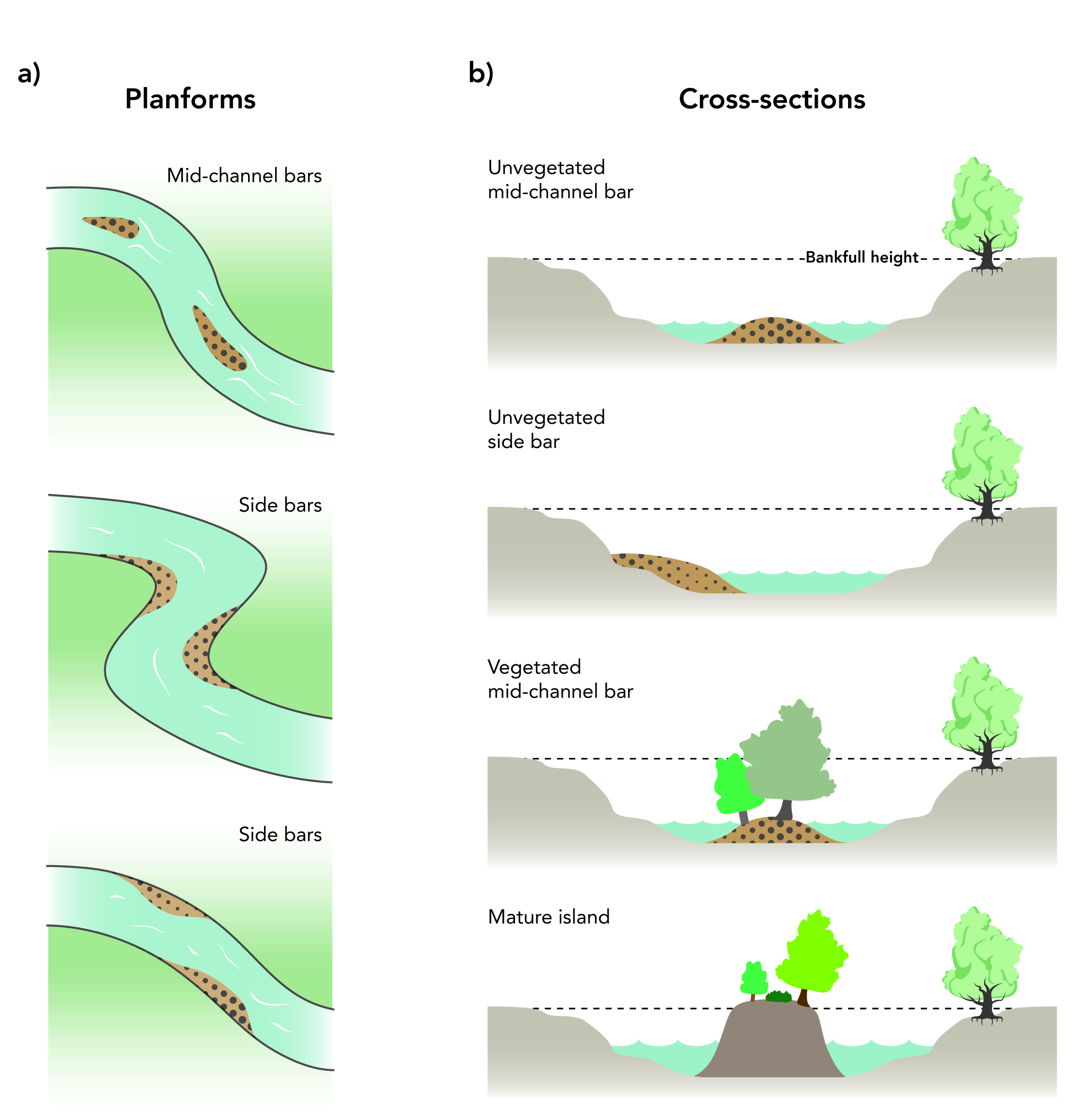
Graphic showing the different kinds of bars and islands
Not visible (NV)
Self-explanatory. Use for culverts and if the far bank and margin are obscured by large mid-channel structures or impenetrable vegetation. Beware overgrown channels in late summer where vegetation may also mask features.
None (NO)
No obvious features. Record only when there is a clear view of the bank and marginal areas of the spot- check, AND no features are present.
Unvegetated eroding cliff (EC)
Bankface profile is predominantly vertical, near vertical, or undercut, with a minimum height of 0.5m, and showing a ‘clean’ face (<50% cover of mosses, ferns and other vegetation). The angle of the cliff will depend on bank substrate; clay or cohesive earth banks are often almost vertical; sandy ones are rarely this steep. Other clues: turf overhanging cliff, turf in channel, recently fallen trees, leaning or over-hanging fence posts.
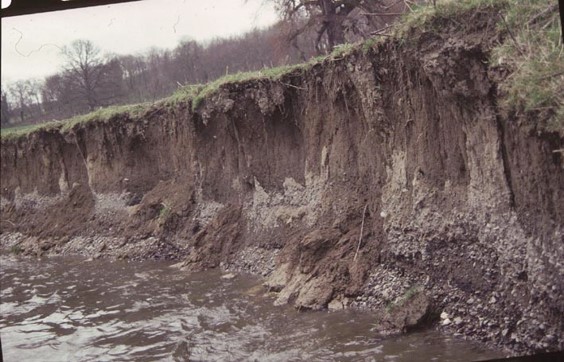
Example of an unvegetated, eroding cliff
Vegetated stable cliff (SC)
Bankface profile is predominantly vertical, near vertical, or undercut, with a minimum height of 0.5m, and without obvious signs of recent erosion. Mosses, ferns and other vegetation on the bankface usually cover >50% of the bankface. Some clay banks may have little or no vegetation, but are nevertheless stable.
Vertical rock faces should not be recorded as ‘SC’. The purpose of recording ‘cliffs’ is to identify the instream sources and character of sediments that may be transported downstream and those riverine features associated with active erosion.
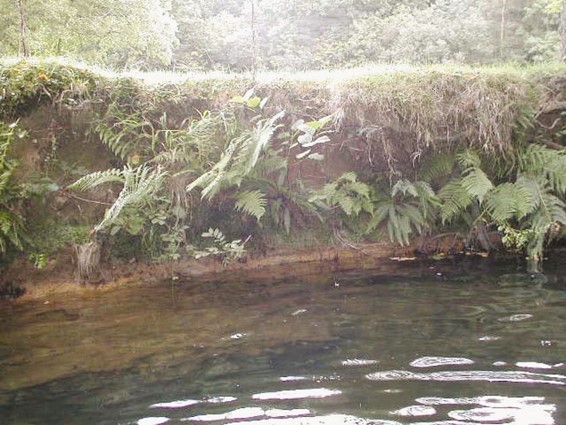
Example of a vegetated, stable cliff
Unvegetated side bar (SB)
A distinctive depositional feature composed of unconsolidated sediment located along the margins of rivers. Exposed at low flow, usually with a shallow slope into the water. ‘Unvegetated’ when <50% of the total surface area has plant cover.
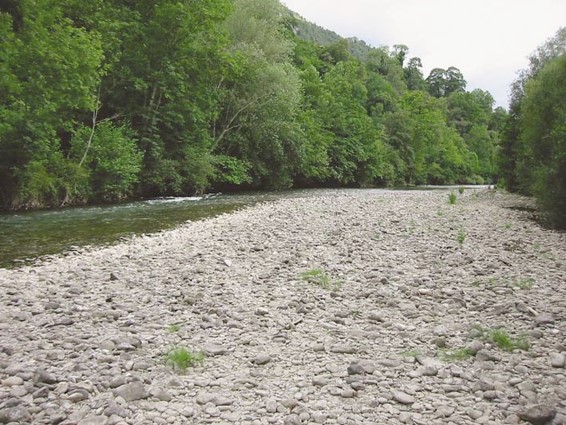
Example of an unvegetated, side bar
Vegetated side bar (VS)
A distinctive depositional feature composed of consolidating sediment along the margins of rivers. Exposed at low flow, usually with a shallow slope into the water. ‘Vegetated’ when >=50% of the total surface area has plant cover. May show a successional sequence from bare shingle, herbs and mosses, to scrub.
Bars are depositional features, primarily composed of material transported down the river channel, and deposited on the river bed. River bed material can be carried long distances (many kilometres), or very short distances, depending on the size of the material and the energy of the river. A gravel-bed river will usually have gravel bars; a sand-bed river will have sand bars.
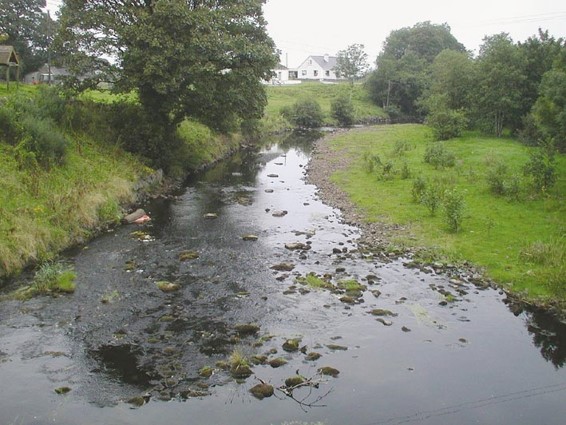
Example of a vegetated, side bar